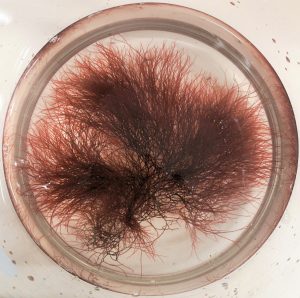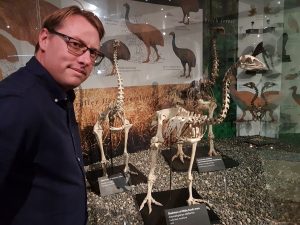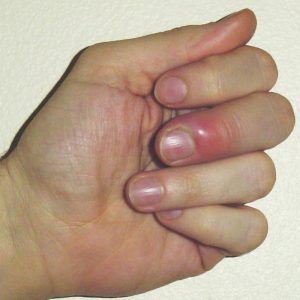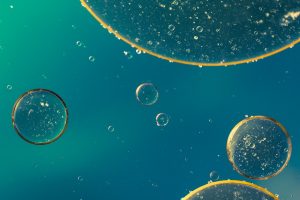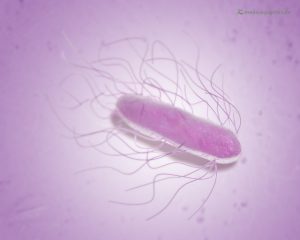Biochemistry – with colour! Or the day I narrowly avoided seaweed stain down my front (and found out about a really cool protein)
Some time back, I was absent-mindedly striding down the particleboard-clad corridors of the Otago Biochemistry Department, when I nearly smacked right into Malcolm Rutledge, one of our excellent assistant research fellows. Luckily, I stopped just in time, because he was carrying very precious cargo. Nestled in a polystyrene box filled with ice, was a glass tube with a brilliant crimson-red liquid in it. Continue reading
Kiwi and moa teach us about what makes species different
The kiwi, the emu, the moa, the cassowary, the rhea, the ostrich. They’re all part of a group of flightless birds from the Southern hemisphere known as ratites, and they’re giving us some very cool lessons on how animals evolve.
Otago Biochemistry’s Dr Paul Gardner and his bioinformatic colleagues from Harvard University, the Welcome Sanger Institute, and the Universities of Texas and Toronto have been using DNA sequences from these birds to figure out how species evolve, at the DNA level.
How viruses that kill bacteria can help in cancer research
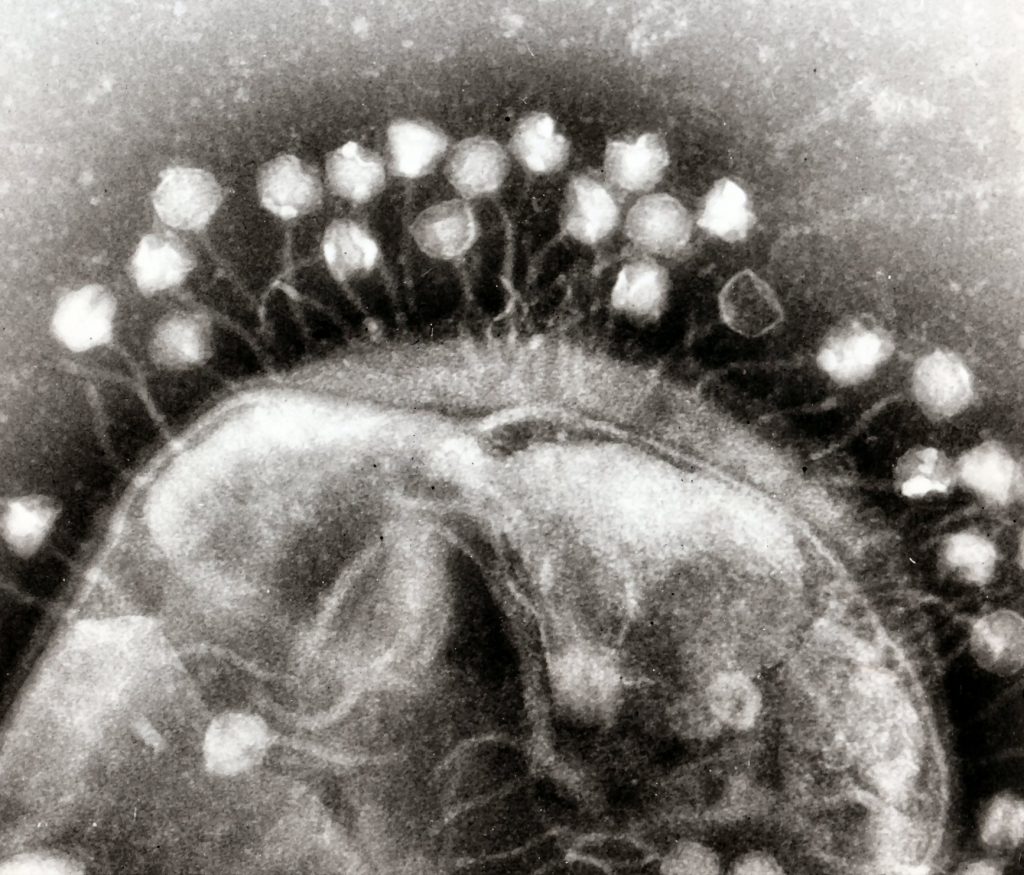
Bacteriophage cluster around a bacterium, ready to hijack its resources. Image: Dr Graham Beards|Wikimedia.
Dr Adam Middleton, a researcher at Otago Biochemistry, introduces bacteriophage viruses and explains how he uses them to help with his research into molecules involved in cancer.
The bacteriophage – ‘the deadliest being on earth’ – is a virus that infects bacteria and forces the bugs to dedicate the remainder of their brief lives to generate more phage. Continue reading
AI vs evolution
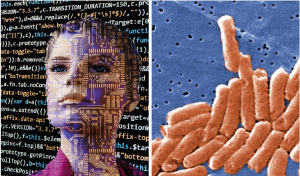 Artificial intelligence gets a lot of scare stories in the media at the moment. But AI is a powerful tool that can be used for good as well, especially in fields that now generate tons of data, like medicine.
Artificial intelligence gets a lot of scare stories in the media at the moment. But AI is a powerful tool that can be used for good as well, especially in fields that now generate tons of data, like medicine.
One of the big challenges in modern medicine is keeping ahead of the microbes that cause infectious diseases. Can AI, in particular a small part of AI called machine learning, help us detect and stop deadly infectious diseases before they spread and become harmful epidemics? Continue reading
Turning inflammation on, one step at a time
One of the amazing things your body does is to protect itself against disease. When bacteria or viruses invade your body, or you cut yourself, your white blood cells and the substances they produce will protect you, and start healing the damage. The affected area swells up and hurts. This process is called inflammation.
However, when something goes wrong and a body can’t turn off the inflammation response, or it turns on at the wrong time, inflammation can cause arthritis and other autoimmune diseases, and can even lead to cancer. Continue reading
Stress relief – cell style
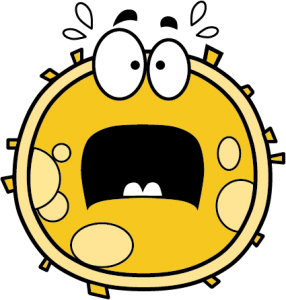 Everywhere you look there’s something to stress you: Trump-induced stressing over the end of the world, working insane hours to gain a toe-hold on the housing ladder or to keep food on the table, kids screaming, keeping up with social media, etc…
Everywhere you look there’s something to stress you: Trump-induced stressing over the end of the world, working insane hours to gain a toe-hold on the housing ladder or to keep food on the table, kids screaming, keeping up with social media, etc…
It’s not just your body as a whole that has to deal with stress. Your cells do too. But what your cells consider to be stressful is probably not at the top of your list of things you worry about. Continue reading
The little rascal – high heart disease risk
We all know that eating too much bad food and not exercising puts us at risk of cardiovascular disease. But did you know there is another risk factor that increases the risk of heart disease in more than 1 in 5 people, that is determined by a person’s genetics, doesn’t respond to diet or exercise, and currently has no treatment?
This risk factor is a high level of lipoprotein(a) in the blood.
Lipoproteins are packages for carrying lipids (a fancy word for fats and oils) in the blood. Lipids do not mix well with water or blood, therefore they have to be packaged up with special proteins so they can be moved in the blood stream around the body. Continue reading
Watching evolution at work
Wayne Patrick, a senior lecturer in the Otago Department of Biochemistry*, is a devoted fan of evolution and proteins. He and his former PhD student, Matilda Newton, along with colleagues in Sweden, have been looking at changes that happen as an organism evolves, not just in the genes, but also in the machinery of cells, the proteins.
Thanks to Darwin and others we know a great deal about evolution, but there is still a lot to learn, particularly the nitty-gritty at the molecular level. We need to understand how evolution works, not just to understand how people and other creatures came into existence, but for many reasons, especially to improve our understanding and treatment of diseases. Continue reading

